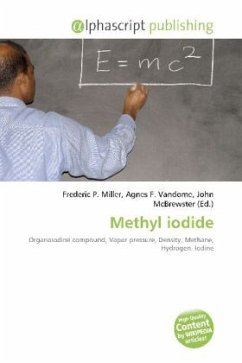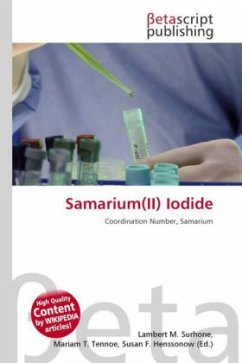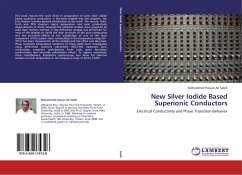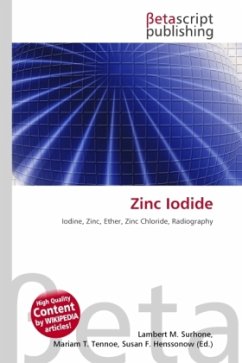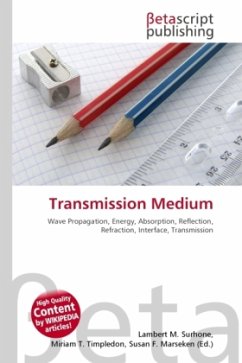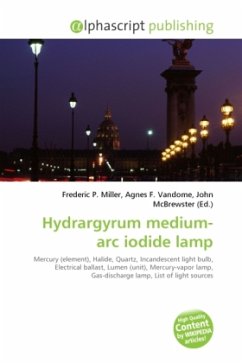
Hydrargyrum medium-arc iodide lamp
Versandkostenfrei!
Versandfertig in 6-10 Tagen
23,99 €
inkl. MwSt.

PAYBACK Punkte
12 °P sammeln!
Hydrargyrum medium-arc iodide, or HMI, is a mercury-halide gas discharge medium arc-length lamp with a multi-line emission spectrum. The "H" in HMI stands for hydrargyrum, Latin for mercury. An HMI lamp uses mercury vapour mixed with metal halides in a quartz-glass envelope, with two tungsten-coated electrodes of medium arc separation. Unlike traditional lighting units using incandescent light bulbs, HMIs use ballasts to regulate and supply electricity to the lamp head via a header cable. The lamp operates not by heating a tungsten-based filament, but rather by creating an electrical arc betwe...
Hydrargyrum medium-arc iodide, or HMI, is a mercury-halide gas discharge medium arc-length lamp with a multi-line emission spectrum. The "H" in HMI stands for hydrargyrum, Latin for mercury. An HMI lamp uses mercury vapour mixed with metal halides in a quartz-glass envelope, with two tungsten-coated electrodes of medium arc separation. Unlike traditional lighting units using incandescent light bulbs, HMIs use ballasts to regulate and supply electricity to the lamp head via a header cable. The lamp operates not by heating a tungsten-based filament, but rather by creating an electrical arc between two electrodes within the bulb that excites the pressurized mercury vapour and provides very high light output with greater efficiency than incandescence-based lighting units. The efficiency advantage is near fourfold, with approximately 85u2013108 lumens per watt of electricity. Unlike incandescent lightbulbs where the gas is inert and solely for filler and recirculation purposes, HMI bulbs rely heavily on the mercury vapour and the metal halides to give them the spectral peaks in their light output to approximate the sunlight.



